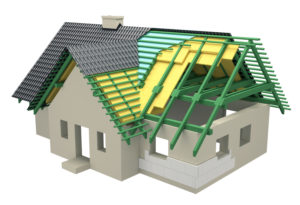EPDM Rubber Roofing FAQs
 As professional roofing contractors in Carson City, we are often asked questions about different roof types. EPDM rubber roofing is a common roof material that is used on flat or low-sloped roofs. It is a great roofing material for the Ohio climate and is a popular option across the United States.
As professional roofing contractors in Carson City, we are often asked questions about different roof types. EPDM rubber roofing is a common roof material that is used on flat or low-sloped roofs. It is a great roofing material for the Ohio climate and is a popular option across the United States.
However, there are other similar roofing materials available for flat and low-sloped roofs including TPO, PVC, BUR, SPF, Modified Bitumen, CSPE, PIP, KEE, and several varieties of spray applied coatings.
So let Coyne Roofing give you some tips. Here are some common questions and answers about EPDM rubber roofing systems.
What does EPDM stand for?
EPDM stands for Ethylene Propylene Diene Monomer. Unlike TPO and PVC, EPDM becomes rubberized when ethylene propylene is combined with diene. TPO is a blend of polypropylene and ethylene-propylene rubber. PVC polyvinyl chloride.
What is EPDM roofing used for?
EPDM rubber is a synthetic M-class rubber product that is used for a wide range of roofing applications. EPDM rubber roofing membranes are commonly found on flat commercial roofs or low-slope roofs. Liquid EPDM roof coatings can be applied for leak repair or roof replacement.
What is the difference between EPDM, TPO, and PVC roofing?
EPDM can be dried and cured into sheets or left in a semi-solid state. The first is a black or white-on-black rubberized roofing membrane and the second generally used for detail work or flashing. The white-on-black membrane is a laminated membrane whereas the black is solid material. Black EPDM is often coated with a reflective elastomeric top coat, especially in warmer climates. It is most often fully adhered rather than attached.
TPO is a laminated membrane. Sometimes fiber is added to a TPO membrane for added strength and durability. However, this can mean more rigidity, when comes with problems such as pulling away or shrinking. TPO roofing costs less than EPDM.
PVC roofing has plasticizers added to make the membrane more flexible. Most are mechanically attached, some are fully-adhered, and fewer are ballasted (not adhered but weighted down with gravel or other substances). It is usually white but also comes in a variety of colors. Unlike TPO, seams are usually heat-welded together, which is better to avoid leaks. PVC can also be reinforced but with a fabric mesh, mat, or polyester scrim instead of fiber like TPO.
How durable is EPDM roofing?
EPDM has long been used because of its durability. It stands up very well to freezing weather, snow, ice, and dry or humid environments. In hot climates, it is better to coat the EPDM membrane with a reflective elastomeric top coat which not only helps reflect heat but protects the material from the heat that can cause pulling away at the seams.
Is EPDM safe for the environment?
According to manufacturers and state and federal regulatory authorities, EPDM roofing does not give off harmful chemicals or compounds that contaminate the environment. It is also odorless.
If you have questions about EPDM roofing or are looking for a Carson City roofing contractor, then please call Coyne Roofing at 775-265-7408 or complete our online request form.
More Tips on Roof Types (Roof Types)


















